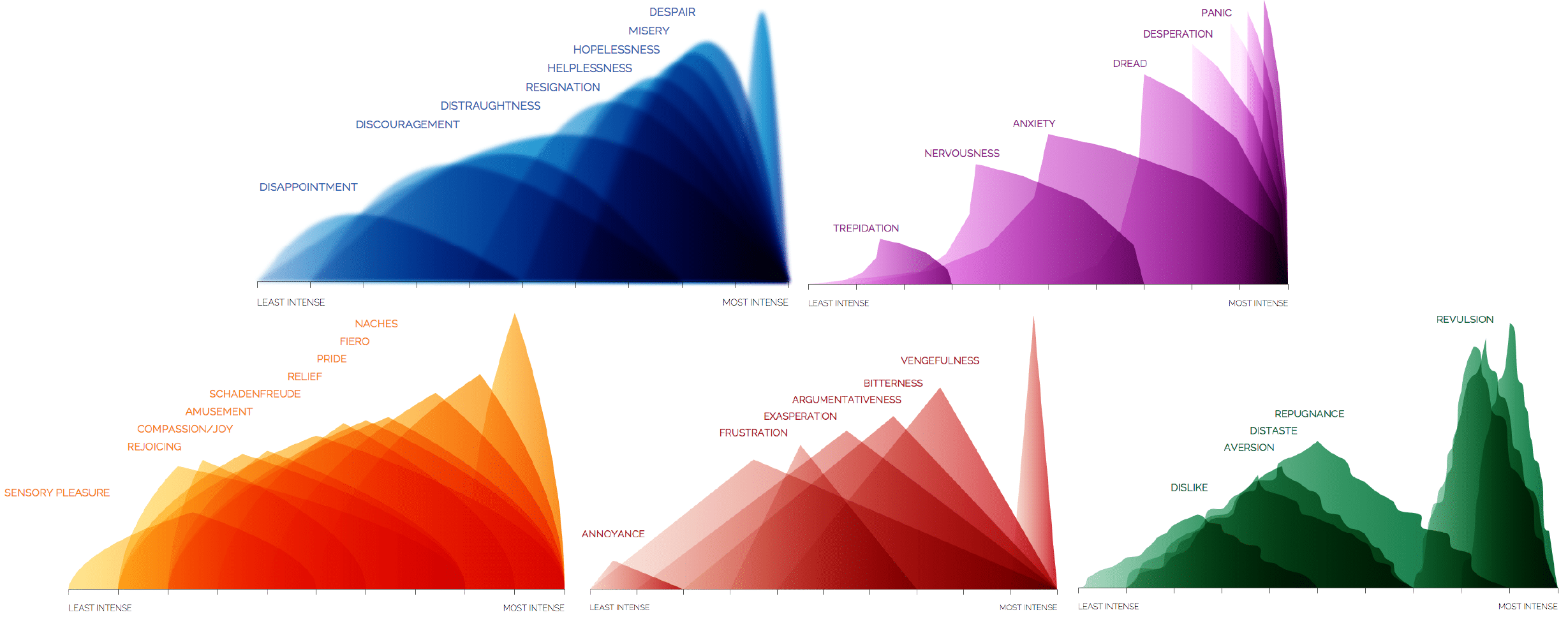
Data Visualization and Feelings
Scientific American
08.12.2016
The concept for Atlas of Emotions emerged from conversations between the Dalai Lama, who funded the project, and Paul Ekman, a prominent psychologist best known for his seminal work in so-called microexpressions. Psychologist Eve Ekman, Paul’s daughter, was a fellow principal investigator on the project. While some of Paul Ekman’s research methods have been criticized in the past, the scientific basis for Atlas of Emotions is outlined on the website, and the associated research paper demonstrates a scientific consensus on the nature of emotions, among those who study the topic.
However, what interests me most about the project is not the underlying science but the visualizations themselves. Created in collaboration with Stamen, a San Francisco-based design firm specializing in maps and data visualization, the interactive consists of five colorful area-chart-style graphics.
The use of color is clearly purposeful, and if you have seen Pixar’s excellent 2015 film Inside Out, the hues may remind you of the characters representing these same five emotions. (The parallel is no wonder, as Dr. Ekman served as a psychology consultant for the film.) For each visualization, the roughly triangular peaks represent specific psychological states. Together, they give an intuitive picture of the relative intensities of each state. For example, on one end of the “sadness” graph disappointment is a shallow but persistent hump, while at the other end anguish looms tall and abrupt.
Meanwhile, the contours of each shape attempt to embody the emotion itself. In some cases it is difficult to articulate exactly why the visualizations are so successful in this regard. In other instances, the design elements are so suggestive as to seem obvious. The edges of the “sadness” visualization are blurred, evoking the oppressive haze of depression or the welling of tears in one’s eyes. The shapes in the “fear” graph rear backwards as if startled, and the irregularly wavy peaks of “disgust” conjure images of toxic ooze.
More than just a set of images, Atlas of Emotions is an interactive learning tool, guiding the user through each emotion, inviting him to explore and contemplate the nuances of each specific feeling. From the triggers that can spur an emotion to the actions with which we respond, Ekman is thorough in his investigation of what makes us human.

